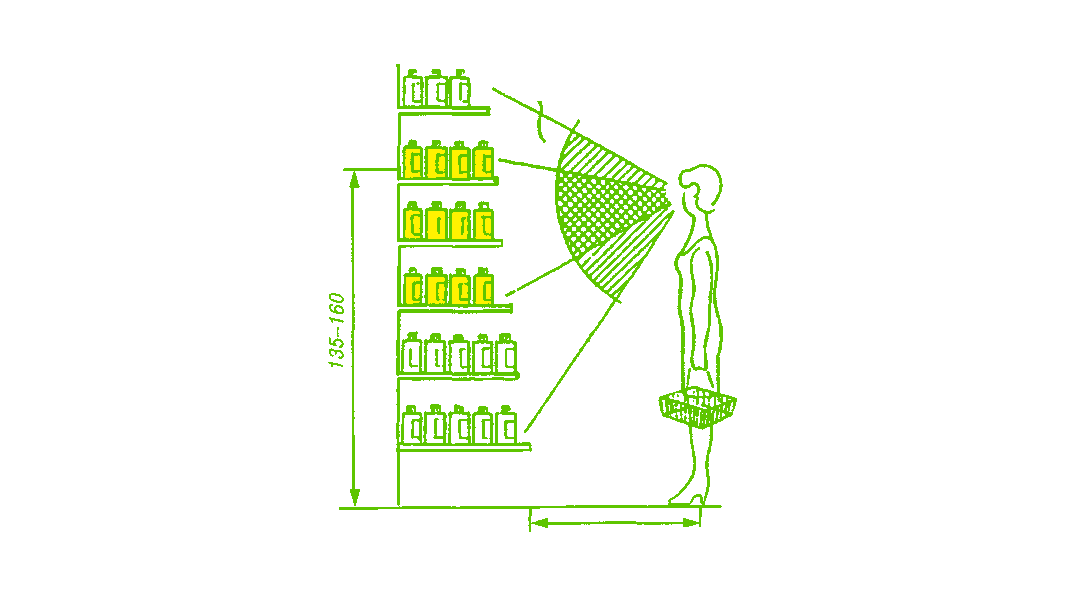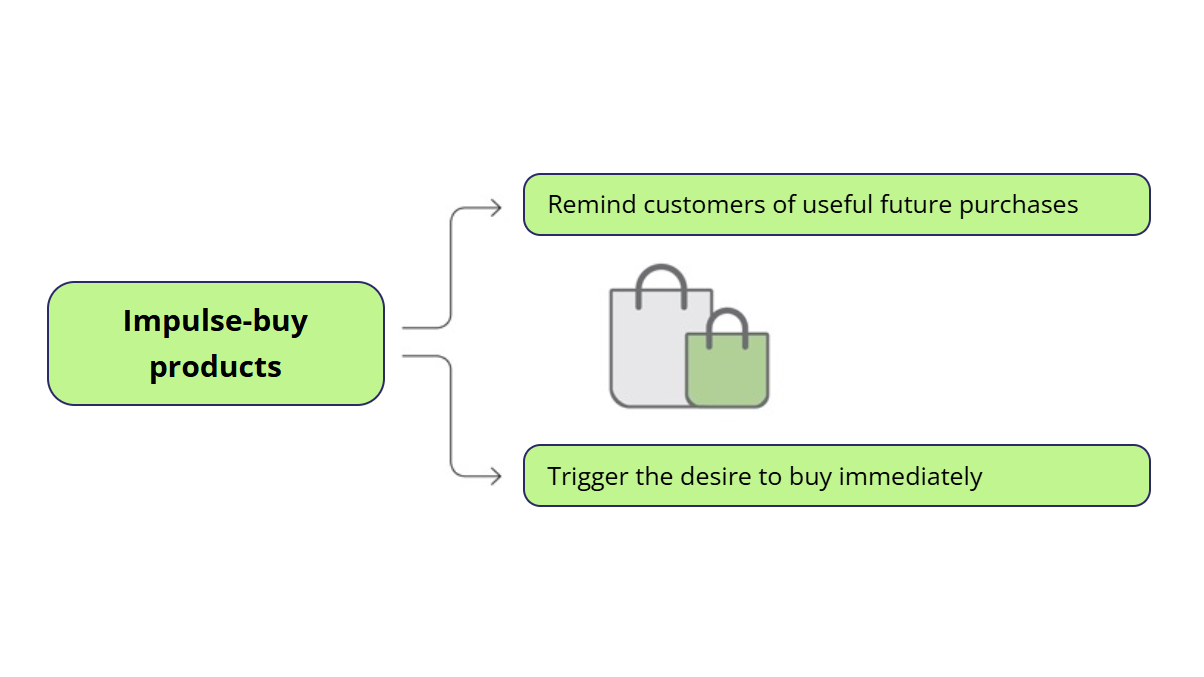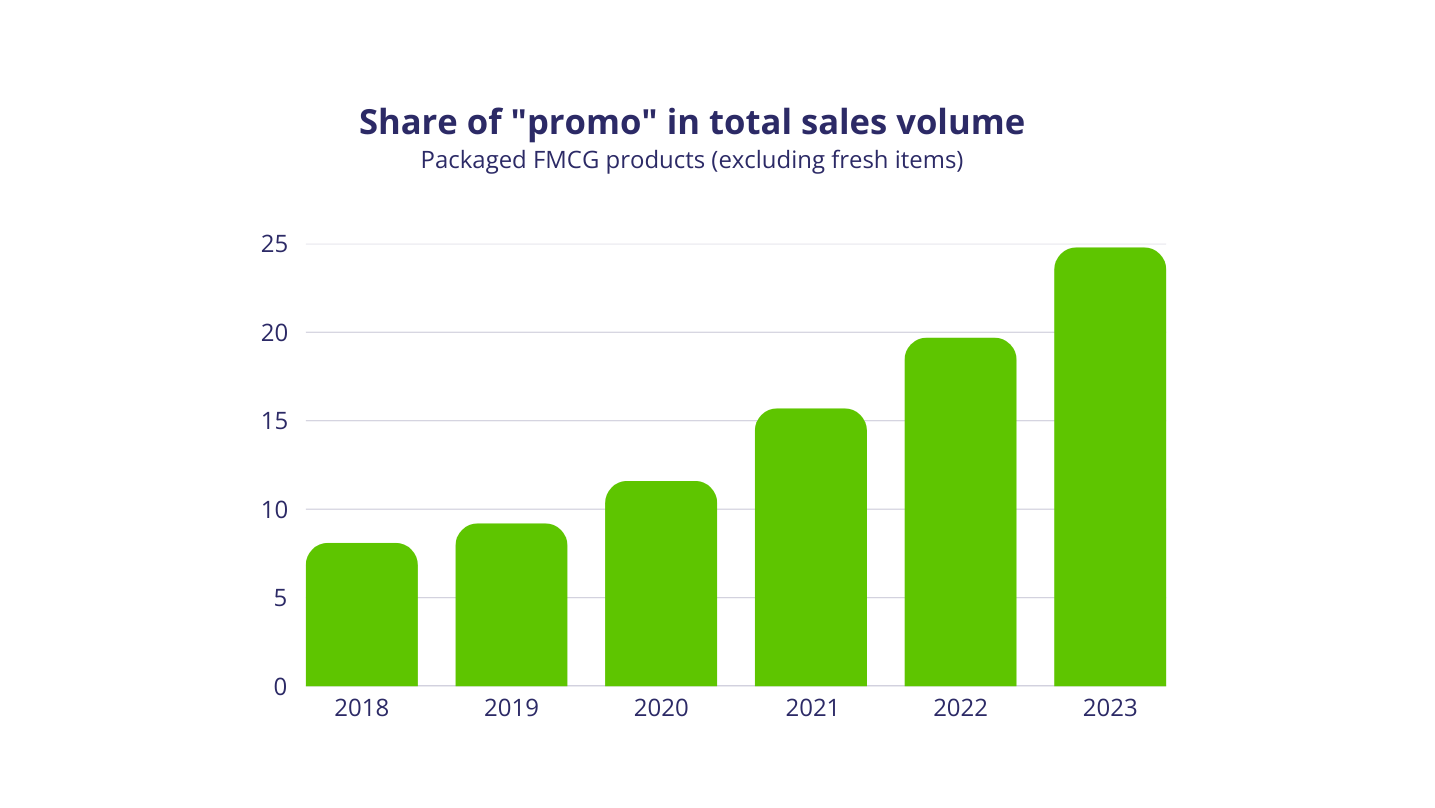
How to increase margin through merchandising
In an increasingly competitive retail market, effective shelf space management has become a crucial factor in a company’s success. Merchandising directly impacts key metrics such as sales volume, inventory turnover, and, most importantly, profit margin.
Modern consumers are becoming less dependent on major brands. This decline in brand loyalty—accelerated by the growth of e-commerce and marketplaces—creates new opportunities for retailers to improve profitability. It allows them to focus on B- and C-category products, private label (PL) items, and even lesser-known brands, which often offer higher margins.
In this article, we will explore key strategies that help retailers leverage merchandising as an effective tool for margin growth.
We will discuss:
These insights will be valuable for both experienced professionals familiar with merchandising fundamentals and newcomers looking to understand how to use this tool effectively to increase profits.
Modern consumers are becoming less dependent on major brands. This decline in brand loyalty—accelerated by the growth of e-commerce and marketplaces—creates new opportunities for retailers to improve profitability. It allows them to focus on B- and C-category products, private label (PL) items, and even lesser-known brands, which often offer higher margins.
In this article, we will explore key strategies that help retailers leverage merchandising as an effective tool for margin growth.
We will discuss:
- How reallocating shelf space among brands can boost profitability
- Why strategic use of prime shelf locations and a focus on high-margin products are key to success
- How impulse buys, cross-merchandising, and combo offers impact margins
- The role of planograms in revenue management and tips for their optimisation
These insights will be valuable for both experienced professionals familiar with merchandising fundamentals and newcomers looking to understand how to use this tool effectively to increase profits.
Reducing dependence on A-category brands

One of the key trends in modern retail is the decreasing dependence on major A-category brands. It is becoming increasingly evident that the share of purchases driven by brand recognition is gradually declining. Instead, consumers are now more likely to choose products based on their features, price category, and recommendations.
Traditionally, retailers have allocated significant shelf space to A-category brands because they ensured stable inventory turnover. However, this strategy often limits margin growth potential, as well-known brands typically require high marketing expenses and offer retailers less flexibility in pricing.
Why is this important?

Shifting focus to B- and C-category brands
Private label (PL) products
Dynamic assortment management
- These product categories offer higher margins, allowing retailers to generate more profit per sale.
- Allocating more shelf space to these brands encourages customers to consider alternative products.
Private label (PL) products
- PL items give retailers full control over pricing and offer significant profit margins.
- Example: Using private label products for essential categories such as groceries or household cleaning supplies can boost profitability without compromising sales volume.
Dynamic assortment management
- Continuously analyzing sales data and adjusting brand share based on profitability.
- Testing new products through pilot projects to assess their potential.
How to apply this strategy?

Effective use of "golden" shelves

One of the most powerful merchandising tools is the so-called "golden shelves"—the eye-level zones that provide maximum product visibility and accessibility. Proper utilisation of these areas not only boosts sales but also significantly increases profitability.
Prioritising high-margin products
Reducing space for low-margin essentials: low-margin products, such as sugar or flour, can be placed on lower or upper shelves—keeping them accessible but preventing them from occupying prime display areas.
Product rotation: regularly updating the assortment on golden shelves keeps customers engaged and encourages sales of new or seasonal products.
- High-margin items should take central positions on golden shelves to maximise visibility and increase the likelihood of purchase.
- Example: Premium products or new arrivals that require additional promotion.
Reducing space for low-margin essentials: low-margin products, such as sugar or flour, can be placed on lower or upper shelves—keeping them accessible but preventing them from occupying prime display areas.
Product rotation: regularly updating the assortment on golden shelves keeps customers engaged and encourages sales of new or seasonal products.
How does it work?

- Use eye-level zones to promote high-margin or promotional products.
- Consider seasonality when selecting products for central shelf positions.
- Test different layouts to determine the optimal placement for each category.
Effectively utilising golden shelves not only increases profitability but also enhances the shopping experience by offering customers the most valuable and appealing products.
Recommendations for optimising "golden" shelves

Boosting impulse product sales

Impulse-buy products are a special category of items that customers purchase spontaneously, without prior planning. By strategically placing these products, retailers can significantly increase profit margins without the need for complex marketing campaigns.
Placement at checkout areas
Cross-merchandising in key categories: positioning complementary products near relevant categories increases the likelihood of impulse buys. For example, placing a bottle of wine near the cheese section or pasta sauces alongside pasta and kitchen accessories.
This strategy boosts both impulse purchases and the overall basket size.
Rotation and seasonality: regularly updating impulse product selections keeps customers engaged. Summer items like sunglasses can be replaced with autumn accessories or warming beverages as the seasons change.
- The checkout zone is one of the most profitable locations for impulse products. Chocolate bars, chewing gum, batteries, and other small high-margin items are perfect for this space.
- Example: Featuring seasonal items, such as holiday sweets or summer accessories, encourages additional purchases.
Cross-merchandising in key categories: positioning complementary products near relevant categories increases the likelihood of impulse buys. For example, placing a bottle of wine near the cheese section or pasta sauces alongside pasta and kitchen accessories.
This strategy boosts both impulse purchases and the overall basket size.
Rotation and seasonality: regularly updating impulse product selections keeps customers engaged. Summer items like sunglasses can be replaced with autumn accessories or warming beverages as the seasons change.
How to effectively manage impulse products?

- Choose impulse products with high profit margins.
- Ensure items are easy to grab and have eye-catching packaging.
- Use bold price tags and promotions to attract attention.
Increasing impulse product sales is a simple yet effective way to boost store profitability while enhancing the customer shopping experience.
Tips for retailers

Promo campaigns and combo offers

Promo campaigns and combo offers are powerful tools for increasing profit margins, combining elements of both merchandising and marketing. They help drive sales, boost average transaction value, and enhance customer loyalty by providing attractive and convenient purchasing options.
Convenient solutions for customers
Special offers
- Creating bundles of products that naturally complement each other (e.g., pasta and sauces, cheese and wine, bread and butter).
- Example: Ready-to-eat meal kits or grilling sets that include meat, spices, and sauces attract customers with their convenience.
Special offers
- Combo deals with discounts on the second or third item encourage larger purchases while maintaining profitability.
- Example: "Buy 2 packs of coffee and get 50% off milk."
Combo packs as a way to increase profitability

Focus on seasonal promotions
Rotating the promotional assortment: regularly updating the selection of promo items prevents customer fatigue and keeps interest in new offers high.
Strategic placement
- Developing themed promo campaigns tied to holidays, seasons, or events (e.g., Christmas gift sets).
- Seasonal offers help generate interest in products that might otherwise go unnoticed during other times of the year.
Rotating the promotional assortment: regularly updating the selection of promo items prevents customer fatigue and keeps interest in new offers high.
Strategic placement
- Promotional product visibility is enhanced when displayed on golden shelves or at checkout areas.
- Example: Dedicated shelves for promotional items make them more noticeable and easily accessible.
Promo campaigns for promoting high-margin products

- Select high-margin products for bundle deals.
- Analyze target audience preferences to offer relevant and appealing solutions.
- Use eye-catching packaging and price tags to highlight promotional offers.
Smart use of promo campaigns and combo deals helps retailers not only increase profitability but also enhance the customer experience by providing convenient and cost-effective shopping solutions.
Solutions for successful promos and combo offers

The role of planograms in revenue management

Planograms are a crucial merchandising tool that enables systematic product placement management, optimises shelf space utilisation, and ultimately increases profitability. Well-structured and regularly updated planograms can have a significant impact on a store's financial performance.
Optimising shelf space
Considering seasonality and sales dynamics
Category and price segmentation: dividing shelves into zones for premium, mid-range, and budget products allows for more effective management of customer purchasing decisions.
- High-margin products should be placed in central, highly visible locations.
- Low-margin or budget-friendly items are best positioned on lower or upper shelves, keeping them accessible without occupying prime space.
Considering seasonality and sales dynamics
- Planograms should be adjusted based on seasonal demand shifts (e.g., cold beverages in summer or holiday-themed products in winter).
- Regular sales analysis helps identify changes in customer preferences in a timely manner.
Category and price segmentation: dividing shelves into zones for premium, mid-range, and budget products allows for more effective management of customer purchasing decisions.
Key principles of working with planograms

The frequency of planogram adjustments depends on the store format and product assortment:
- Supermarkets and hypermarkets should update planograms every 1–2 weeks to account for new product introductions and assortment changes.
- Smaller stores with a more limited selection can update planograms monthly or in response to seasonal demand shifts.
Planogram update frequency

- Use data analytics to make informed decisions about product placement.
- Implement automated planogram management systems to streamline processes.
- Test new layouts before rolling them out on a larger scale.
Effective planogram management enables retailers to optimise product displays, increase category profitability, enhance the customer experience, and strengthen their competitive position in the market.
Recommendations for working with planograms

We have explored key strategies that help retailers boost profit margins through effective merchandising:
These strategies are relevant for both large retail chains and local stores looking to enhance their competitiveness and improve financial performance. Implementing a systematic approach to merchandising requires time, resources, and thorough analysis, but the results justify the investment.
We encourage retailers to leverage merchandising to its fullest potential, test new approaches, and adapt to the evolving market. Only companies that are willing to experiment and learn will not only maintain their position but significantly strengthen it in the future.
Merchandising is not just about product placement—it’s about capturing customer attention and driving sustainable profit growth. Use it effectively to turn your shelves into a powerful revenue generator.
- Reducing reliance on major brands in favor of higher-margin products.
- Maximising golden shelf placement to promote the most profitable categories.
- Driving sales with impulse products and cross-merchandising.
- Implementing promo campaigns and combo offers to increase average transaction value.
- Regularly updating planograms to adapt to changing demand.
These strategies are relevant for both large retail chains and local stores looking to enhance their competitiveness and improve financial performance. Implementing a systematic approach to merchandising requires time, resources, and thorough analysis, but the results justify the investment.
We encourage retailers to leverage merchandising to its fullest potential, test new approaches, and adapt to the evolving market. Only companies that are willing to experiment and learn will not only maintain their position but significantly strengthen it in the future.
Merchandising is not just about product placement—it’s about capturing customer attention and driving sustainable profit growth. Use it effectively to turn your shelves into a powerful revenue generator.
Conclusion
Tilda Publishing